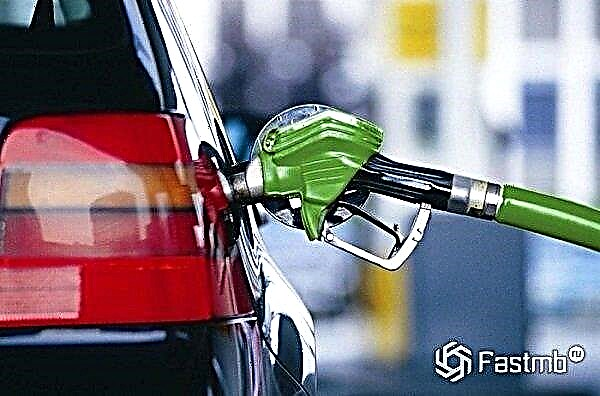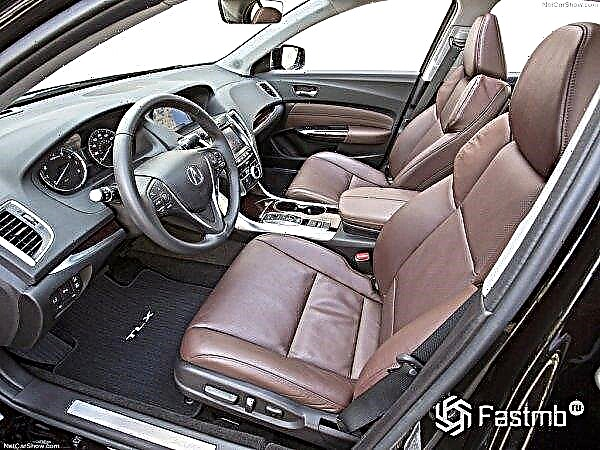
The content of the article:
- What affects the life of car tires
- Signs that tires need to be changed
- Simple Tips on How to Increase Tire Durability
Car tires are the most important components of the wheels of a car. Do not forget about them, since fuel consumption, safety and controllability of the car depend on their condition. However, improper driving style, poor quality of roads, various chemicals on the road and other factors worsen the condition of tires, thus reducing their service life. But any driver can increase the durability of the tires. We'll show you how to do this below.
What Factors Affect Tire Life

A tire is a resilient shell that fits over the rim of a rim. It contacts the road surface and absorbs minor vibrations caused by road imperfections.
The first tire appeared in 1846. It was designed by Robert Thomson. Those specimens were not reliable as they burst frequently. Tire manufacturers are constantly improving their products, so modern tires are many times superior to their ancestors. However, nothing is eternal. Tires have a certain service life, after which they need to be replaced. And you need to change tires at least in pairs (or better all four at once).
If we take into account the current prices, then this can cause significant damage to the car owner's budget. However, the service life of tires can be significantly increased without the need to take any supernatural measures.
But first you need to figure out what the service life of tires is, and what factors affect it.
Tire life is the period during which the manufacturer guarantees that the tires will perform well. Many manufacturers claim that their tires can last up to 10 years. In theory, they are right. In practice, however, tires have to be changed after about 5 years. Sometimes and more often, because many factors affect their service life:
- Driver's driving style. Naturally, fans of extreme driving are more likely to buy tires, as they wear out much faster than from drivers who drive calmly.
- The quality of the road. Alas, in our country the roads are far from ideal, and therefore tires wear out faster than European drivers.
- The quality of tires. Cheap tires from China will wear out much faster than well-known brands. However, you shouldn't think that a big-name brand guarantees success. There are many fakes on the market, so it is better to buy rubber at specialized points.
- Various mechanical damage (cuts, deformations after an accident, bumps after impacts, etc.).
- Performance characteristics (vehicle load, temperature in the driving region, tire pressure, size, storage location, and so on).
How to understand that tires need to be changed

There are some simple rules:
- If the tread is completely worn out (more precisely, it is aligned with the bridges), then the tires have already served their purpose. You can determine the level of wear using a ruler with a depth gauge, but many drivers do this by eye. If the tread height of summer tires is less than 1.6 mm and winter tires are less than 4 mm, these tires should be changed urgently. It is dangerous to ride them.
- On the surface of a number of tires, there are numbers at different depths. The driver can understand the degree of wear by the number of numbers that he sees.
- The wear rate of a studded rubber can be understood by the number of studs remaining on it. If there are less than half of them, the tires must be changed.
- Small cracks on the sidewalls of the tire indicate the aging of the rubber, so it will have to be changed soon.
- If the sidewalls are swollen (“hernias” have appeared), the tires must be changed.
If you find something like this, you will have to change the tires. But it comes at a cost. It is better to increase their durability after all.
How to Improve Tire Life - Simple Tips

As mentioned above, the service life of tires depends on the mode of their use, storage and a number of other factors. If you regularly monitor your tires, take care of them, observe a calm driving style, they will last a very long time.
Now, here are some simple guidelines that will extend the life of your tires, increase safety and reduce the burden on your driver's wallet.
- Use the tire size specified by the manufacturer. If tires of a non-standard size are installed, it can impair the car's handling, comfort and safety. In addition, it will increase tire and suspension wear. Therefore, you should carefully read the instructions for the car, the most optimal tire size recommended by the manufacturer must be indicated there.
- It is necessary to carry out a timely inspection of the machine, in particular tires. Experts advise to thoroughly inspect tires once a month in order to identify defects in time (tread wear, local damage, stuck objects). The valve must have a cap to protect the nipple from dust.
It is important that the tires wear evenly. There should be no cracks, cuts, "rolls" on their lateral surface. If small cracks are visible on the "side", this indicates the aging of the tire, as a result of which it loses its elasticity.
If such suspicious changes are found, you should contact the technical center.
- Check the tire pressure every 3 weeks (but preferably before each ride). This is an extremely important factor in the operation of tires. After all, if the tire pressure is too low, fuel consumption increases, and the degree of traffic safety, on the contrary, decreases. In this case, the tires wear out unevenly. If the car is heavily loaded, you need to increase the air pressure in the tires by 10-15%.
The recommended pressure (depending on the vehicle load) can be seen on a special plate located on the B-pillar or at the end of the driver's door. It is necessary to check the pressure on "cold" tires (that is, before driving). This is done using a pressure gauge. This device is not expensive, so every driver should have it. Modern cars are equipped with a tire pressure monitoring system, so all the necessary information can be seen on the on-board computer monitor.
- Stones and other elements should be regularly removed from the main tread grooves. Small fragments wedge into the surface of the tire and do not fall out even while driving. If they are not pulled out in time, they will penetrate even deeper into the tire, causing it to burst. And this will not only reduce the service life, but can also lead to an accident.
- You need to drive quietly, then the tires will last a long time. Fans of recklessness, sharp braking, turns or moving curbs at speed can only be advised to stock up on money. Indeed, with this style of driving, tires (and not only them) will have to be changed very often.
Quiet driving, on the other hand, will increase the life of your tires. The driver needs to slow down when cornering, when driving on roads with holes, potholes, bumps, on gravel or dirt roads, when crossing railway tracks. Abrupt braking of the car is allowed only in an emergency.
It is also important to avoid sharp strikes against protruding or sharp objects, and do not drive close to the edge of the sidewalk. In short, you should protect your tires from damage. Then they will last a long time.
- New tires need a “run-in” so that they adhere well to the track. The run-in lasts about 250 kilometers, while you need to move calmly, avoiding sharp acceleration, turns or braking.This is especially important for winter studded tires, so that the studs "sit" in their places.
- It is necessary to change seasonal tires in a timely manner. If you ride winter tires in summer, the tires will wear out faster. And it is generally dangerous to use summer tires in winter, because at low temperatures they "dub" and lose their stability on the track. Therefore, it is important to "change the shoes" on time. At -7 deg. you need to remove summer tires, and at +7 degrees. - winter. In this case, the tires will adhere well to the road and will last a long time.
- Periodically (after 8-10 thousand km.) You need to change the tires in places. After all, the front and rear tires wear out at different rates. It all depends on the drive of the car (front or rear). If the difference in tread depth on the wheels of the front and rear axles exceeds 1.5 mm, you should urgently change the tires. In this case, it is imperative to maintain the original direction of movement of the tires. Then the tread will wear evenly and the ride will be comfortable.
- It is necessary to carry out balancing of auto wheels in a timely manner. After all, movement on unbalanced wheels entails uneven wear and premature wear of the rubber. Wheel balancing is required every 15,000 km.
- Don't overload your car. This significantly reduces the tire life (by about 20%). The load must be distributed evenly so that there is no excessive tilt forward or backward. If you have to drive with frequent overloads, you should install special tires with an increased level of permissible loads.
- If possible, you need to refuse to move on the road, which consists of gravel or crushed stone. Such a road surface increases the wear of the rubber. Cracks, cuts, scratches and tears form on it.
- It is necessary to check the toe-in of the wheels, as well as monitor the serviceability of the suspension. Otherwise, this can not only lead to tire wear, but also to loss of control of the car and to accidents.
If the values of the camber-toe angles are violated, the tire treadmill wears out unevenly. It should be remembered that the residual tread depth is measured at the point of maximum wear. If the treadmill reaches a critical level, you will have to buy new tires. It is still better to regulate suspicious axles for camber / toe.
- If possible, avoid driving on hot asphalt. In summer, the road surface gets very hot, which increases the intensity of tire wear. Of course, this condition is difficult to fulfill, since in this case it will be necessary to completely abandon the operation of the machine at an air temperature of more than +30 degrees.
- Tires must be stored properly. Rubber must be protected from sunlight, high temperature and humidity, otherwise it will age quickly, which will shorten its service life by two to three times. Storing tires improperly can damage the carcass and have to be discarded.
The room should be darkened, not subject to sharp temperature fluctuations and with a humidity of 50%. Do not store rubber near cans of gasoline or other chemicals, this will destroy the tires. It is advisable to store tires vertically, resting on any semicircular surface. This will optimally distribute the internal loads.
Once every 2 months, you need to turn the tire to change the fulcrum. It is forbidden to store rubber in a pile. Tires must be cleaned of dirt before storing.
Let's summarize
If you adhere to the above recommendations, the tires will last a long time. At the same time, driving by car will become safer, and the driver will be able to approximately halve the cost of tires.











